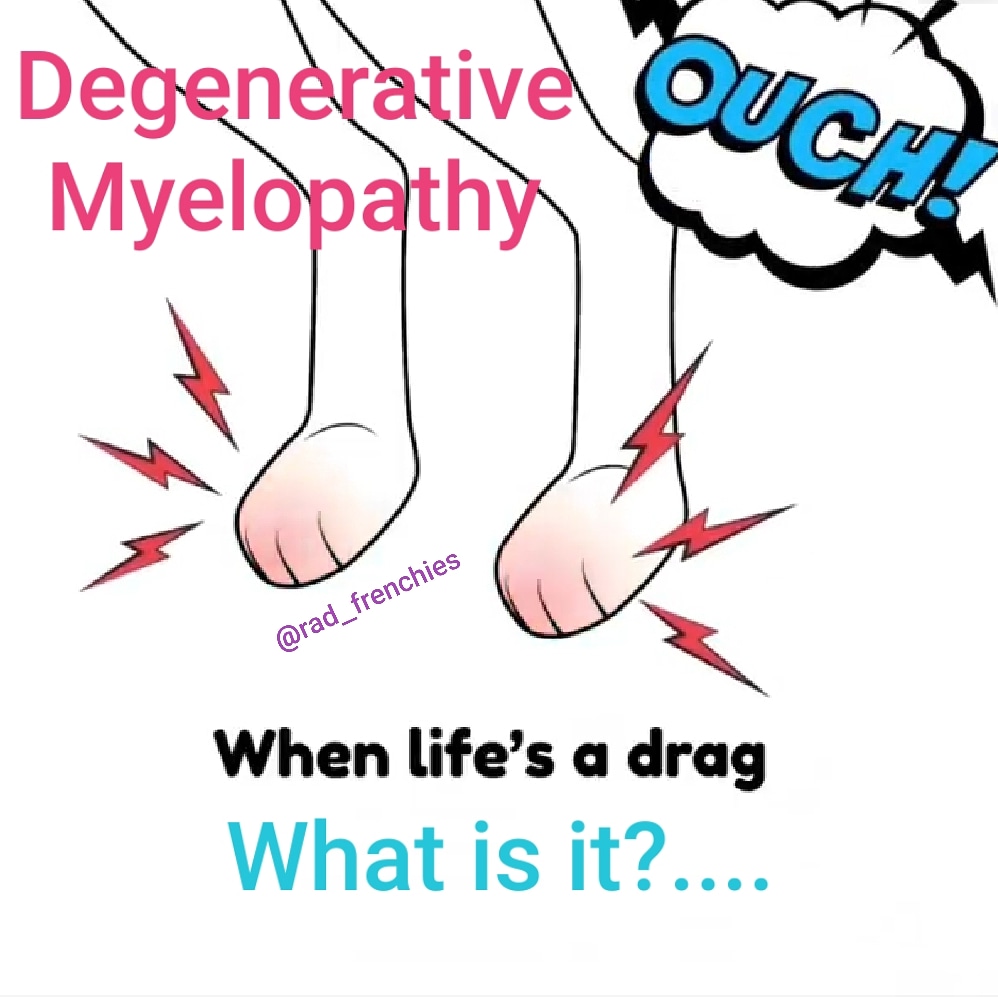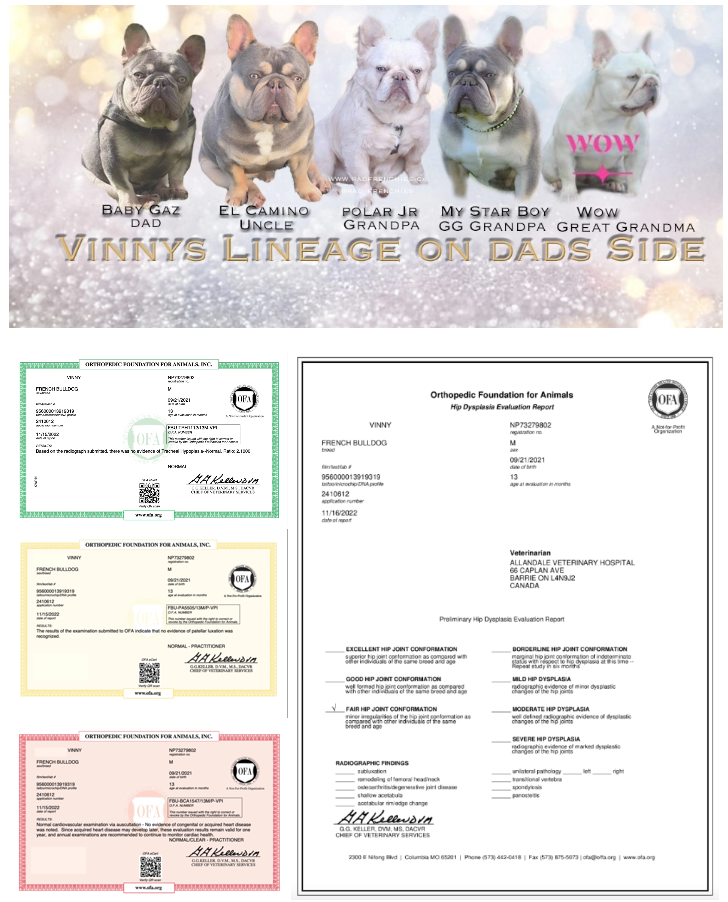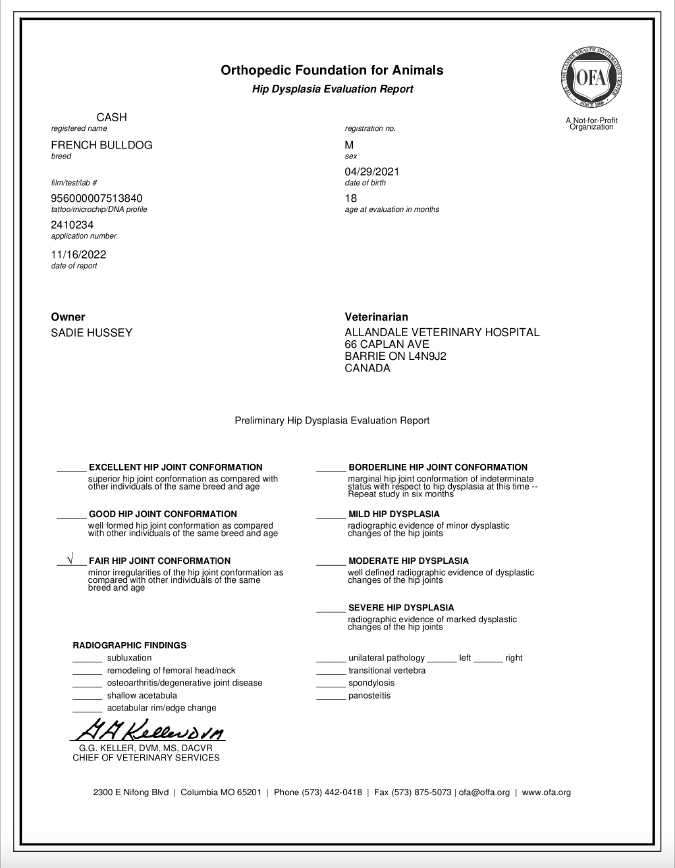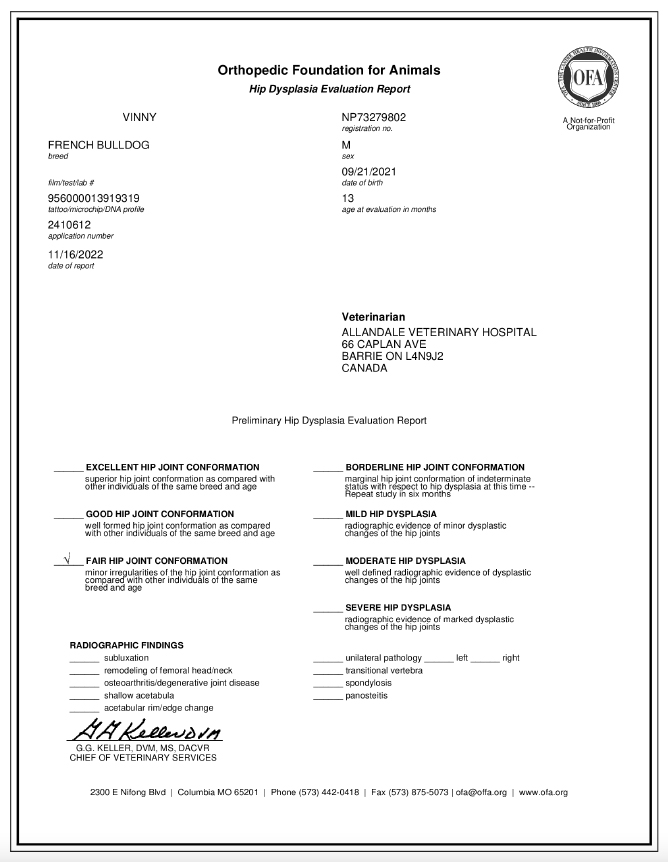We are seeing an increasing number of breeders “saying” they complete Orthopedic Foundation for Animals testing. When they do not!
IF your breeder can’t proudly display these certificates it means they don’t test OR have bad results and have chosen to keep them private in fear of you seeing. End of story. Any breeder that is proud to test will happily display their results!
In order for tests to be considered OFA they need to be provided to the breeder by the Orthopedic Foundation for Animals. They will have the breeders dogs name, registration number and results.
Tests are completed at the breeders vet of choice and submitted to the OFA (Orthopedic Foundation For Animals).
Once the OFA receives the test results their team will review the results. Come to a conclusion and email the results in a certificate format to the breeder. It takes up to 3 weeks to receive results from OFA. If your dog is not registered with your kennel club you will not be able to submit to the OFA as they require your dogs registration number as well as the parent of your dogs registration numbers.
Why is OFA testing important? French bulldogs are prone to breed specific diseases such as BOAS, hip dysplasia and IVDD. What does that mean?
These diseases affect your dogs quality of life and often result in euthanasia at a young age.
Your breeder can decrease your dogs chances of having to go through BOAS surgery by breeding dogs with a good trachea, that don’t breathe heavily and working towards widening the nares.
They can decrease your dogs risks of having hip dysplasia and IVDD by breeding dogs with good hip results and good spines.
OFA confirms the dog being bred is in good physical health structurally and a suitable candidate to produce offspring. If your dog does not pass its OFA testing the certificate will display poor results.
It costs roughly $1000 per dog to complete a full test panel. Most breeders working towards improving the breed do these tests.
HEREDITARY DISORDERS WE TEST FOR THROUGH DNA
ALL OF OUR FRENCHIES HAVE DNA TESTING DONE – This is a separate test from the OFA testing & I will put a heavy emphasis on saying that although the DNA testing is good, the most important tests your breeder can do is OFA test – Orthopedic foundation for Animals test.
Diseases we test for through DNA testing can be read about below.
The definitions of the diseases are directly from Animal Genetics Incorporated.
🐾🐾🐾🐾🐾🐾🐾🐾🐾🐾🐾🐾🐾🐾🐾🐾

CMR1 – Canine Multifocal Retinopathy (CMR) is an autosomal recessive eye disorder known to affect Great Pyrenees, English Mastiffs, Bullmastiffs, Australian Shepherds, Dogue de Bordeaux, English Bulldogs, American Bulldogs, Coton de Tulears, Perro de Presa Canario, and Cane Corsos.
The mutation causes raised lesions to form on the retina which alters the appearance of the eye but usually does not affect sight. The lesions may disappear, or may result in minor retinal folding. Symptoms of the mutation usually appear when a puppy is only a few months old, and generally do not worsen over time.
🐾🐾🐾🐾🐾🐾🐾🐾🐾🐾🐾🐾🐾🐾🐾🐾
 DM – Degenerative Myelopathy (DM) is a progressive neurological disorder that affects the spinal cord of dogs. Dogs that have inherited two defective copies will experience a breakdown of the cells responsible for sending and receiving signals from the brain, resulting in neurological symptoms.
DM – Degenerative Myelopathy (DM) is a progressive neurological disorder that affects the spinal cord of dogs. Dogs that have inherited two defective copies will experience a breakdown of the cells responsible for sending and receiving signals from the brain, resulting in neurological symptoms.
The disease often begins with an unsteady gait, and the dog may wobble when they attempt to walk. As the disease progresses, the dog’s hind legs will weaken and eventually the dog will be unable to walk at all. Degenerative Myelopathy moves up the body, so if the disease is allowed to progress, the dog will eventually be unable to hold his bladder and will lose normal function in its front legs. Fortunately, there is no direct pain associated with Degenerative Myelopathy.
The onset of Degenerative Myelopathy generally occurs later in life starting at an average age of about 10 years. However, some dogs may begin experiencing symptoms much earlier. A percentage of dogs that have inherited two copies of the mutation will not experience symptoms at all. Thus, this disease is not completely penetrant, meaning that while a dog with the mutation is likely to develop Degenerative Myelopathy, the disease does not affect every dog that has the genotype.
🐾🐾🐾🐾🐾🐾🐾🐾🐾🐾🐾🐾🐾🐾🐾🐾

HUU – Dogs with this genetic mutation metabolize waste products as uric acid in their urine. The uric acid forms into hard stones in the bladder, causing pain and inflammation as the stone moves through the urinary tract.
A dog that has difficulty urinating or appears to have an inflamed bladder may have HUU. Other signs can include blood in the urine and frequent urination. If the dog is unable to pass the urate stones without medical intervention, surgery may be required to remove them. And if the urinary tract is blocked, the condition can be life threatening. Even in the best case scenario, HUU is uncomfortable and painful for the dog.
The mutation is autosomal recessive. Both parents will need to be carriers of the mutation to pass it on to their offspring. Carriers will not show any symptoms of HUU and even affected dogs may not show any signs, so it is important to test dogs for HUU prior to breeding.
🐾🐾🐾🐾🐾🐾🐾🐾🐾🐾🐾🐾🐾🐾🐾🐾
JHC – Juvenile Hereditary Cataracts (JHC) are a clouding of the lens of the eye caused by a breakdown of tissue in the eye. This condition generally results in an inability to see clearly and can cause total blindness. In canines, cataracts are often familial; this type is known as Hereditary Cataracts. A mutation in the HSF4 gene causes this type of cataracts in several breeds of dogs. In this case, the dog is typically affected bilaterally, in that both eyes are affected by the cataracts. The cataracts associated with HSF4 also occur in the posterior region of the lens. They usually start by being small and grow progressively, though the speed of growth is highly variable. Some cataracts will grow so slowly that the dog’s vision remains relatively clear, while others will grow such a way that the dog will quickly go blind. Corrective surgery is possible, though it is costly and is not always effective.





















